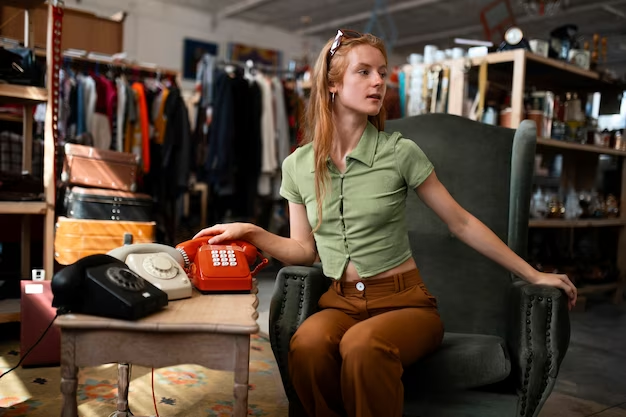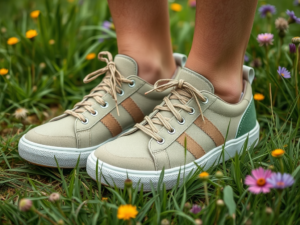When we step into the realm of fashion and adorn ourselves with garments of the past, we often invoke the term ‘vintage’—a word that signifies more than just age, encapsulating an era of style that continues to influence and inspire modern wardrobes. Vintage clothing, broadly defined, refers to attire dating back from 20 to 100 years ago, thus clothing that has withstood the test of time and now exists as a representation of a bygone fashion epoch. This classification not only heralds the craftsmanship and design aesthetic of its time but also carries with it a historical and cultural significance that today’s fashion enthusiasts seek to preserve and cherish. Examples of vintage clothing include 1950s swing dresses, 1970s bell-bottom jeans, and 1920s beaded flapper gowns, which are highly sought after for their unique character.
Defining Vintage: A Timeline Perspective
Vintage clothing is often misclassified, finding itself in a hazy trio with ‘antique’ and ‘retro’ clothing, but each term is distinct in its own right. Antique clothing typically refers to items that are at least 100 years old, transporting us to an entirely different historical period, while retro, often confused with vintage, is actually modern clothing that imitates the style of a previous era. Unlike these, vintage represents a middle ground; it comes from a past not too distant yet far enough to be reflective of a different time. A common question like “”is 2000 considered vintage”” surfaces as fashion timelines evolve; while not yet, it is on the cusp according to the 20-year rule and will soon be celebrated as vintage.
Vintage vs. Antique vs. Retro
- Antique Clothing: Over 100 years old, from a bygone historical period.
- Vintage Clothing: Falls within the 20 to 100-year timeframe, reflective of a specific fashion era.
- Retro Clothing: Modern clothing with a stylistic nod to previous eras.

Timeframe for Vintage Classification
- 1920s-1990s: Generally accepted as the vintage period as of the 2020s.
- The 20-Year Rule: Often applied to denote when garments transition into vintage status. It explains how old is vintage clothing when people aim to categorize their fashion finds accurately.
| Era | Style Characteristics | Notable Fashion Elements |
|---|---|---|
| 1920s | Flapper dresses, cloche hats, Art Deco | Beading, fringe, dropped waistlines |
| 1940s | Utility clothing, A-line skirts | Broad shoulders, tailored waists |
| 1960s | Mod fashion, psychedelic prints | Mini skirts, Go-go boots |
| 1980s | Power dressing, athletic wear | Shoulder pads, neon, spandex |
Characteristics of Vintage Clothing
Vintage clothing is esteemed for a level of quality and craftsmanship that can be challenging to find in the mass-produced fashion of today. When exploring vintage pieces, one is likely to encounter superior fabrics, meticulous attention to detail, and construction techniques that are rarely employed in today’s fast fashion cycle. This quality is a testament to an era when clothing was made to last and often tailored to fit the individual wearer, adding an element of exclusivity and personalization.
Beyond quality, vintage clothing is identifiable through distinctive styles and trends unique to each era. Examples of vintage clothing trends are the 1960s mod look characterized by bold geometric patterns and the 1980s power dressing highlighted by vibrant neon colors and assertive silhouettes. These distinctive styles offer fashion historians and enthusiasts alike a tactile archive of the social and cultural narratives of the time, reflected in fabrics, cuts, and adornments.
Designer labels often play a pivotal role in what is classed as vintage. Iconic design houses like Chanel, Dior, and Yves Saint Laurent have contributed timeless pieces to the vintage market, often fetching high prices due to their esteemed provenance and landmark designs that disrupted and influenced their respective eras.
The Resurgence of Vintage Fashion
In a world increasingly driven by sustainability and ethical fashion choices, vintage clothing has found new favor. These garments, inherently sustainable due to their reuse, stand in stark contrast to the disposable nature of much modern fashion. They do not contribute to the ongoing cycle of production and waste but instead offer a stylish alternative that champions longevity and eco-friendliness.
Vintage fashion has also surged back into popularity fueled by pop culture and media, with television shows and films set in or inspired by previous decades creating a longing for the authentic styles depicted on screen. Celebrities and influencers are often seen donning vintage pieces, further cementing their desirability and “”cool”” factor among broader audiences.
Influence of Pop Culture and Media
- Television and Cinema: Inspiring interest through period-specific costumes depicted in popular shows and films.
- Celebrity Influence: Driving trends by adopting vintage styles on the red carpet and in everyday fashion.
Nostalgia and the emotional value of vintage cannot be overstated. Collectors and fashion lovers often seek out vintage pieces for the stories they carry and the personal connection they feel toward a particular decade or style. Wearing vintage is akin to wearing a piece of history; it’s a way to experience a different era’s lifestyle and ethos. The patina of time on a vintage garment adds a depth of character that can’t be replicated by contemporary clothing, making each vintage item a treasure trove of memories and a testament to the enduring nature of well-crafted fashion.

Acquiring and Caring for Vintage Clothing
Finding true vintage treasures can be an exciting endeavor for enthusiasts. Thrift stores, specialized vintage shops, online marketplaces, and estate sales are favorite hunting grounds for vintage shoppers. However, it is important to be knowledgeable about vintage items to ensure authenticity and value.
Where to Find Vintage Treasures
- Thrift Stores: A source for hidden gems at bargain prices.
- Online Marketplaces: Convenient for browsing extensive collections from around the world.
- Estate Sales: Opportunities to acquire high-quality pieces with historical significance.
Tips for Authenticating Vintage Items
- Check for garment labels indicating the era of manufacture.
- Research the construction techniques and materials used in different time periods.
- Be mindful of wear and tear that aligns with the item’s purported age.
The maintenance and preservation of vintage clothing are crucial. Specialized cleaning techniques, proper storage methods, and careful handling are necessary to keep these garments in the best possible condition. Regularly inspecting for any damage and addressing issues promptly can extend the life of vintage clothing, ensuring it can be worn and enjoyed for years to come.
Maintenance and Preservation of Vintage Clothing
- Proper Cleaning Techniques: Often requiring delicate hand-washing or professional dry cleaning.
- Storage Solutions: Using breathable garment bags and avoiding direct sunlight to prevent fabric deterioration.
- Repair and Restoration: Employing experts or learning skills yourself to fix minor wear or update fittings.

Conclusion
The allure of vintage clothing is rooted in its ability to tell a story, connect us to the past, and offer a sense of uniqueness in a world dominated by mass production. Whether driven by sustainable practices, the pursuit of authentic style, or the thrill of the hunt, the appreciation for vintage fashion continues to grow. As society becomes more conscious of consumption and the environmental impact of fast fashion, the role of vintage clothing in the industry may expand even further. The future of vintage fashion seems bright as new generations discover the richness and timelessness of garments from eras gone by, ensuring that what is seen as vintage today will continue to be celebrated and reinvented in the years ahead.
FAQ
Q1: How do you distinguish true vintage from retro-inspired pieces?
A1: True vintage items are garments that were actually made in the period they represent, typically 20 to 100 years ago. To distinguish them from retro-inspired pieces which are modern reproductions, look for authentic labels, unique construction methods, and fabric consistent with the era they claim to be from.
Q2: Why has vintage clothing become so popular in recent times?
A2: Vintage clothing has gained popularity for several reasons, including the desire for unique and authentic styles, the influence of popular culture romanticizing past eras, and a growing awareness of sustainable fashion practices.
Q3: Can modern clothing ever be considered vintage?
A3: Yes, modern clothing can be considered vintage once it reaches the 20 to 100-year age range, as per the common definition. So, clothing from the early 2000s will soon be regarded as vintage.
Q4: How can you tell if a vintage item is worth purchasing?
A4: A vintage item is worth purchasing if it’s in good condition, authentic, and has the stylistic or designer elements that are sought after. Knowing the market and current trends in vintage fashion can also guide your decision.
Q5: What should you avoid when caring for vintage clothing?
A5: When caring for vintage clothing, avoid harsh chemicals, machine washing or drying when not recommended, and exposing the items to direct sunlight or humid environments which can damage the fabric and cause fading. Always follow care instructions that are specific to the item’s age and material.





